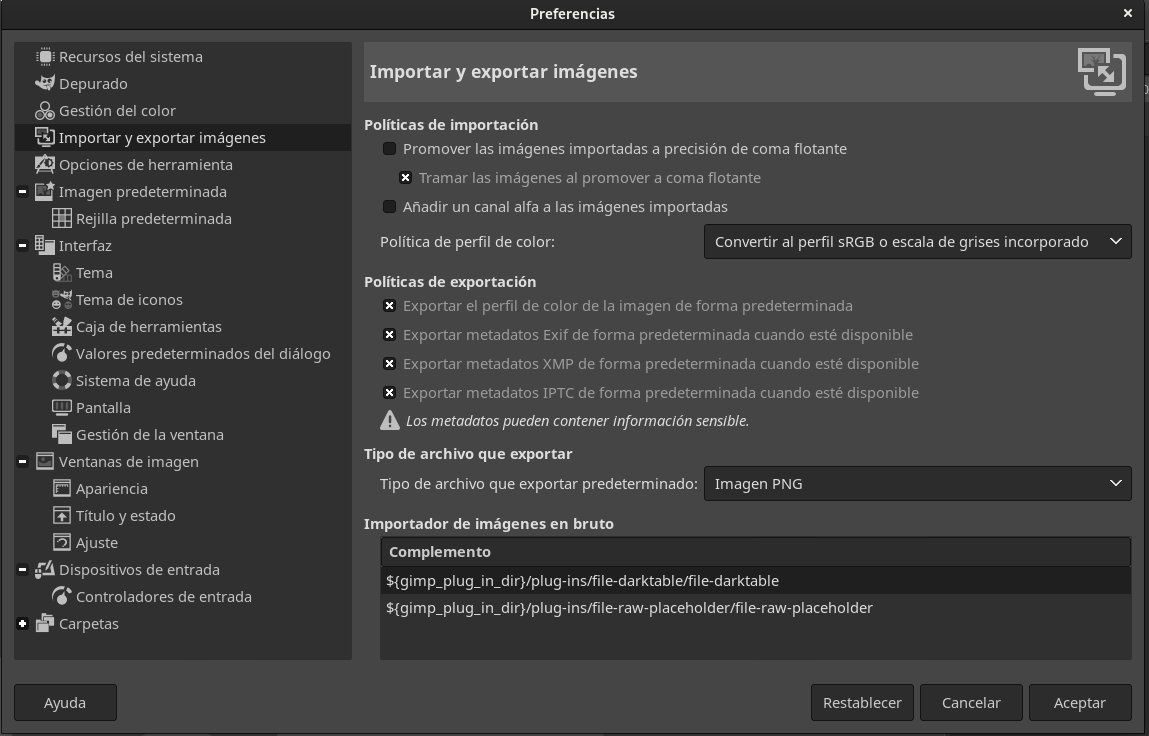

- Using darktable and gimp manual#
- Using darktable and gimp full#
- Using darktable and gimp pro#
- Using darktable and gimp software#
- Using darktable and gimp download#
Modular 'Dock' UI allows you to rearrange the layout exactly as you like.Streamlined Settings panel gives you access to a wide array of configuration options to tweak every aspect of your broadcast or recording.Add new Sources, duplicate existing ones, and adjust their properties effortlessly. Powerful and easy to use configuration options.
Using darktable and gimp full#
Take full control with VST plugin support.
Using darktable and gimp software#
Also see: Q4.Free and open source software for video capturing, recording, and live streaming. Some stitching errors will be unavoidable, especially in small rooms or with objects close to the camera. Keep in mind that all cameras with multiple lenses will produce images with parallax. Press Yes and all your images will be converted.
Using darktable and gimp pro#
The template can also be used for batch conversion using the Batch Builder (PTGui Pro only):

The images are aligned already and the panorama can be stitched by going straight to Create Panorama.
Using darktable and gimp manual#
You only need to perform manual alignment once for each camera, the result can be stored in a template and re-used. This is due to small differences between individual cameras of the same type, resulting in different small offsets of the image circles. While this already results in a roughly stitched image, the images still need to be aligned for perfect stitching. If an image from such a camera is loaded into PTGui, PTGui will actually add the same image to the project twice, with different cropping circles and masks, positioned at -90 and +90 degrees yaw. PTGui supports several of these cameras, including the Samsung Gear 360, Xiaomi Mijia Mi Sphere, Yi 360 VR and Ricoh Theta Z1. Several single shot 360° panoramic cameras exist, producing a single image containing two circular fisheye images side by side. How can I stitch images taken with a 360° one shot camera in PTGui?
Using darktable and gimp download#
You don’t need a separate download of the template.Ħ.43.

We sadly do not have the money for a THETA Z1īecause we just bought a DJI Mavic Air drone 1100$ in sek =10 175.2925 Swedish kronor Many mistake this and do mess up the stitching. You have to mark the Control points in the overlapped arias only Remember the images are 1 and 2 number 2 are a copy Yes on (Xaomi MiSphere camera) and the (Garmin Virb 360 camera) the image and copys are horizontal but the Raw files from (Insta36 ONE X) they are Vertical When you set the control points, the images are horizontal and you select the left sphere in image 1 and the right sphere in image 2? To be able to get a good precise batch stitch on hundreds of images We have to crop the images do to small differences in the camera hardware No it is the two images when we mowed the building to the center! Why are you looking at this screen? To verify the stitch line? Not necessarily i think the THETA Z1 are quite good in level! Oh, do I need to straighten the image with the mouse? Oh, do I need to straighten the image with the mouse


 0 kommentar(er)
0 kommentar(er)
